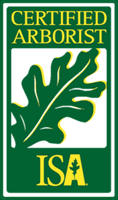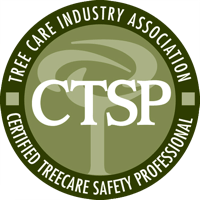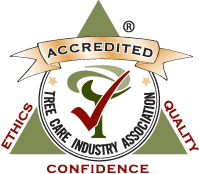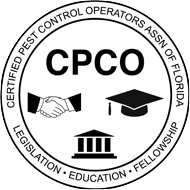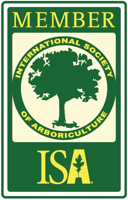Trees are among the most valuable assets in any landscape. They provide shade, improve air quality, support wildlife, and enhance property value. Yet, many people aren’t sure when it’s time to seek professional help for their trees. Should you tackle a leaning trunk yourself? How about that fungus growing near the roots? This is where a certified arborist can make all the difference, offering expertise that goes well beyond routine pruning or casual observation.
1. Visible Structural Damage
a) Cracks and Splits
Deep cracks or splits in the trunk or major branches are red flags. This kind of damage can compromise the tree’s structural integrity, making it more susceptible to storm-related failures. An arborist can assess the severity of the damage and determine whether the tree can be stabilized with cables or braces—or if removal is the safer option.
b) Leaning Trunks
A slight lean over time isn’t always alarming, but a sudden or noticeable tilt can be a sign of root issues or internal decay. Strong winds, flooding, or even soil compaction might cause a once-stable tree to begin leaning dangerously. An arborist can perform tests (like a root collar inspection or a tree risk assessment) to figure out whether the tree can be saved or if it poses a hazard.
2. Signs of Disease or Infestation
a) Fungal Growth and Conks
Fungus on or near a tree’s trunk often indicates internal decay. Conks (shelf-like fungi) or mushrooms at the base may mean the wood is rotting from within. While some fungi are harmless, others, like Ganoderma butt rot in palms, can be lethal. An arborist is trained to distinguish between benign and harmful fungi and propose treatments or removal if needed.
b) Unusual Leaf Discoloration or Defoliation
Leaves turning yellow, brown, or splotchy out of season can point to nutrient deficiencies, bacterial leaf scorch, or pest activity. Rapid defoliation—especially on one side of the canopy—may suggest wilt diseases or borers. Arborists can pinpoint the underlying cause and recommend targeted interventions, such as injections, soil amendments, or pruning infected limbs.
c) Pest Infestations
Termites, borers, scale insects, whiteflies—these pests thrive in South Florida’s warm climate. Left unchecked, they can hollow out branches, introduce secondary infections, or cause widespread leaf drop. An arborist can identify the pest species, gauge the infestation level, and plan a responsible treatment regimen that may include beneficial insects or appropriate pesticides.
3. Large or Hazardous Pruning Jobs
a) Overhanging Limbs
Branches extending over your home, driveway, or public sidewalks pose a significant liability risk. While you can handle minor pruning tasks on smaller, accessible limbs, large limbs close to structures often require specialized equipment and knowledge. Arborists use safe climbing techniques and tools like pole saws or bucket trucks to prune dangerous branches without damaging property.
b) Height and Equipment Limitations
If a tree is too tall for your standard pruning tools or if pruning requires you to work near power lines, it’s wise to call a professional. Arborists follow strict safety protocols to protect themselves, your property, and surrounding utilities.
4. Storm Preparation and Recovery
a) Pre-Storm Assessments
In South Florida, hurricane season can be unforgiving. An arborist can assess your trees’ resilience by checking for weak root systems, cracks, or dead limbs that might fail in high winds. Preemptive trimming and structural support can dramatically reduce storm damage.
b) Post-Storm Cleanup and Restoration
After severe weather, downed branches and uprooted trunks can create hazardous conditions. Even if a tree appears intact, internal damage might be overlooked. An arborist can safely remove debris, inspect for hidden issues, and advise on whether the tree needs extra support or should be removed entirely.
5. Construction and Landscaping Projects
a) Protecting Root Zones
Building expansions, driveway installations, or even minor landscaping changes can disrupt a tree’s root system. Digging trenches or piling soil against the trunk can suffocate roots and accelerate rot. An arborist consults with property owners and contractors to outline protective measures—like root barriers or adjusted construction plans—that keep trees healthy during and after projects.
b) Transplanting Mature Trees
Transplanting an established tree is often more cost-effective and eco-friendly than removal and replanting—if done correctly. Arborists can evaluate root ball size, timing, and aftercare, ensuring the best chances for survival in the new location.
6. Complying with Local Ordinances
Many South Florida communities have specific ordinances protecting native or “heritage” trees. Removing or heavily pruning certain species without proper permits can result in hefty fines. An arborist familiar with local regulations can:
- Identify Protected Species: Knowing if your oak or cypress falls under local protection.
- Obtain Permits: Handle necessary paperwork for removal or significant pruning.
- Recommend Alternatives: Suggest less invasive pruning or relocation options that meet local codes.
7. Preventive Maintenance and Regular Checkups
Even if your trees seem healthy, annual or bi-annual checkups from an arborist can catch potential problems early. From spotting soil compaction near the root zone to diagnosing small fungal infections before they spread, proactive care saves money and preserves your property’s aesthetics.
- Routine Pruning: Encourages strong branch structure and better airflow.
- Soil Testing and Amendments: Ensures trees get essential nutrients.
- Pest and Disease Monitoring: Detects minor issues before they escalate.
Conclusion
Knowing when to call an arborist can mean the difference between losing a valuable tree and preserving it for years to come. From identifying structural damage and disease to safely handling large pruning jobs, arborists bring a wealth of knowledge and specialized skills. Their goal is to balance safety, health, and aesthetics—so your trees can flourish in South Florida’s challenging environment.
If you’re unsure about your tree’s condition or face any of the scenarios mentioned above, don’t wait.
Contact Zimmerman Tree Service for expert guidance. Our certified arborists are ready to help you assess risks, treat infections, and create a tailored maintenance plan that keeps your landscape safe, beautiful, and thriving.

